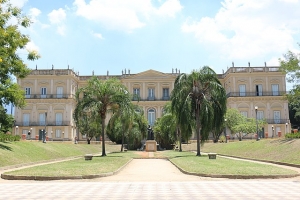It was expected that the advisory opinion on the climate emergency and human rights requested by the Republic of Colombia and the Republic of Chile to the Inter-American Court of Human Rights (‘IACtHR’ or ‘Court’) would attract a high level of participation. While the 2017 Advisory Opinion on the Environment and Human Rights No. 23 had the participation of four states, three international organizations and more than forty civil society entities, thus guaranteeing a significant participation in the Court’s advisory proceedings, the current request for an advisory opinion has extensively exceeded these numbers. Nine states, seventeen bodies of international organizations and more than 200 civil society entities (including communities, NGOs, academic institutions and individuals) participated in the consultation by formulating arguments (either as official pronouncements or as amici curiae in the sense of Article 73 of the Rules of the Court) in relation to the extremely detailed questions put to the Court. The written observations of states and other entities have already been made available on the Inter-American Court’s website.
On January 9, 2023, Colombia and Chile submitted to the Inter-American Court of Human Rights a joint request for an advisory opinion containing 20 detailed questions regarding the Climate Emergency and Human Rights, pursuant to Article 64 of the American Convention on Human Rights (ACHR). This request is part of an expanding trend by states in the region to request opinions from the Court, which seems equally willing to respond to requests and, on these occasions, to elaborate largely on the obligations and interpretations of the provisions of the Convention. According to the joint request, the aim was to “clarify state obligations to respond to the climate emergency in relation to international human rights law”. The questioning aims at both an answer regarding the individual and collective dimension of human rights, allowing the court to pronounce on state obligations in relation to individuals and groups of individuals who may eventually have their rights affected due to alterations arising from climate change resulting from anthropogenic actions and their emission of greenhouse gases.
The sky-high level of participation in the consultative procedure before the Court raises both procedural and substantive issues. The first of these concerns the actual conduct of the proceedings in the oral phase. The Court seems aware of this problem and, in a presidential Order of February 22, 2024, divided the hearings into three different locations (Bridgetown, Brasilia and Manaus), consolidating its practice of holding activities also outside of San José. The question remains of how to process and analyse all the material submitted and how to strike a balance between the opinions of states and those of international organizations and civil society.
The purpose of this post is to assess the significance of this participation and identify some of its particularities and the legal questions it raises, especially with regard to state participation. While the post frames more questions than answers them, perhaps the Court itself will be able to clarify these issues when it renders its 32nd advisory opinion.
Issues relating to participation: what legal weight?
Compared to the more than 200 civil society submissions which, for the most part, will espouse progressive arguments regarding the protection of human rights in the context of the climate emergency, only eight (out of 35) member states of the Organization of American States have submitted written observations to the Inter-American Court. The possibility of other member states participating is not ruled out. In the Order of 22 February, the Court also allocated time for member states who did not submit written observations and one can expect that some states might seize this opportunity. It is worth mentioning that none of the states that sent observations challenged the jurisdiction or admissibility of the advisory opinion, most of them welcoming the initiative of the Court and the opportunity to clarify obligations arising from different legal regimes.
The ninth state participating the proceedings is the Republic of Vanuatu, which is particularly involved in the climate cause and litigation. Article 73 of the IACtHR Court’s rules does not expressly provide for the participation of non-member states of the Organization. The Court seems to have made an analogy with Article 44 of the Convention (which actually deals with the competences of the Commission) and states on its website that “any person or institution may submit an amicus curiae brief”. However, given its flexible, well-established practice of admitting international organizations and civil entities as amici curiae, the Court’s decision to accept a non-OAS state observation seems unsurprising, especially in light of the obvious interest of the state in question. However, future practice will be able to answer how the advisory procedures of the Inter-American Court will be open to non-member states, in a clear move towards its universalist pretension. Another emerging question is whether non-member states will also be allowed to intervene in the oral proceedings and which weight the Court will attribute to their observations.
While the presence of states in the procedure seems to be without any major problems, there is also the question of the role attributed to the entities and bodies of the states taking part in the opinion. Ten entities under the name of “Organismos estatales“, i.e. official entities within states, sent contributions. In some cases, the state in question decided not to send written observations by its central body, but some public entity submitted its views on the issues raised (could this be an example of legal paradiplomacy?). For instance, although Guatemala did not send written observations, the Procurador de los Derechos Humanos of the Republic did, apparently in an official capacity. Interestingly, the División Relaciones Internacionales y Cooperación of the city of Montevideo also submitted observations, although Uruguay did not submit its views on the questions.
The extent to which these written observations represent the position of the whole State is open to discussion and there is little practice of the Court in this sense, at least in relation to advisory proceedings. The following question is whether these manifestations could be used domestically as official positions of the organ of the State. This issue seems particularly thorny when one considers that some States that submitted their official views also had infranational organs submitting observations (like Mexico). Again, the weight ascribed to these views by the Court remains to be seem. If on the one hand it seems difficult to bind the entire state by virtue of a statement of its organs in an advisory procedure, the fact that the Court distinguishes this type of statement, even if for organizational purposes, as a statement by state bodies is telling. In previous advisory opinions the Court seems particularly prone to stress states’ views on some matters.
Similarly, one might wonder whether the interpretations of human rights obligations with regard to Climate Change put forward by organs or agencies of international organizations (13 in total), or by OAS organs (4) to any extent represent the views of the whole organization or carry any particular legal weight to be highlighted by the Court.
The Court does not often mention the opinion of civil society organizations in its advisory opinions, though one can suggest that it pays particular attention to them, especially to the legal materials collected and reasoning advanced. The present situation poses the difficulty of assessing all the materials submitted in its variety: from questions ranging from obligations relating to fossil fuels to interpretations of the convention in relation to vulnerable groups. Be that as it may, the elevated engagement of civil society might mean, other than the great interest on the subject, that a huge part of these entities will be paying attention to the Court’s ruling and probably will use its pronouncements on domestic level.
The simmering question: States vs non-state positions.
In view of the many questions that have been raised and that the Court will have to deal with (although it has the inherent power to reformulate the questions put before it), there are some points that are particularly sensitive and on which there seems to be disagreement between states and the opinions from civil society (see here and here). Just to mention a few, the question of the direct adjudication of collective and environmental rights via Article 26 of the American Convention (a question avoided by some states), the effects of the application of the principle of common but differentiated obligations in relation to human rights obligations (see, for instance, the observations of Barbados, Brazil, Chile, Colombia, Costa Rica, El Salvador, Mexico, Paraguay), and, eventually, the very autonomy of the human right to a balanced climate as a right protected under the American Convention – following the recognition of the autonomy of the right to a healthy environment. Not to mention the recent pronoucement of the Court in La Oroya v. Peru on the possibility of some rules relating to the protection to the environment acquire the status of peremptory norms.
The Inter-American Court’s advisory opinion on the climate emergency and human rights will have many topics on which to elaborate, also in relation to other treaties to which the states of the region are party, and on some of which it is not possible to verify state consensus – or event state consent. What role will the Paris Agreement (and consequently the NDCs) play in the interpretation of states’ human rights obligations? If the Agreement is considered by some states in the region (like Brazil) to be a human rights treaty, it seems at least conceivable that the Court will rule on this issue. The same is true of the Escazú Agreement, which is already in force but has not been ratified by some states due to domestic resistance.
The judges of San José are faced with difficult but necessary questions, and the high level of participation by different actors highlights the underlying tensions between the expectations of civil society and the obligations of states in this field. The Court’s ability to answers to these questions and to deflate the tensions could be reflected not only in Inter-American international law, but also in general, to the extent that its interpretations and clarifications are taken up in universal debates, including at the Court in The Hague.
-

Professor de Direito Internacional Público da Universidade Federal de Minas Gerais. Coordenador do Grupo de Pesquisa em Cortes e Tribunais Internacionais CNPq/UFMG. Membro da Diretoria da ILA-Brasil.





